Clock Source Solutions for Electronic System
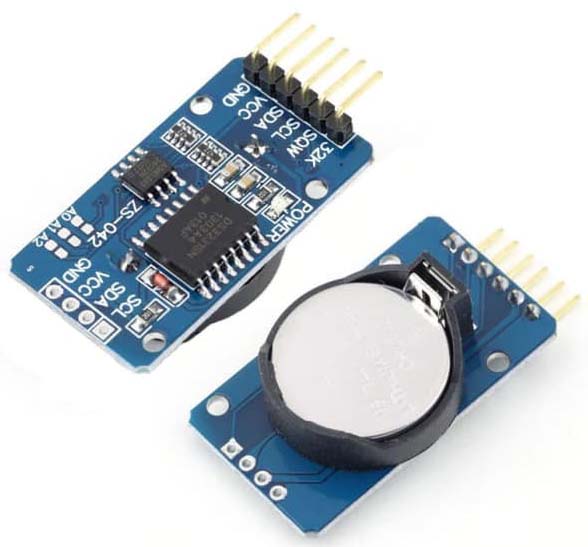
Clock Source Solutions for Electronic System
Some electronic circuits require a clock with a certain frequency to be able to work, for example, a microprocessor/microcontroller system and a synchronous digital circuit. In this article we outlined several clock sources with various accuracy.
In brief, commonly used clock sources are as follows:
- Inductor-based oscillator/capacitor
- Crystal-based oscillators: crystal only, temperature compensated crystals (TCXO and MCXO), crystal with oven (OCXO), Crystal with GPS (GPSDO)
Daftar Isi
Inductor & Capacitor based Oscillators Clock Circuit
Oscillators produce sinusoidal waves with a certain frequency. Generally oscillators are made with passive components of resistors, inductors and capacitors, as well as active components of transistors or op-amps.
The frequency of signals generated on this type of circuit depends on the inductor/capacitor value used. The inductors/capacitors are subject to change due to temperature timing or effect, so the frequency of the resulting signal is also changed, hence the frequency accuracy is low.
Here is an example of a series of oscillators with active components transisto[sumber]r.

Here is an example of a relaxation oscillator with an active component op-amp. [sumber]

Crystal-based Oscillators Circuit
In this type of oscillator, the clock signal is generated using a piezoelectric material that vibrates with a certain frequency. The vibration frequency of the piezoelectric material is determined by its size, so the frequency of the resulting signal can be very precise.
The crystal frequency value is generally expressed for certain temperatures. The physical size of the crystals is affected by temperature, so if the temperature changes, the frequency of the resulting clock signal also changes.
Here are examples of crystal components[sumber]
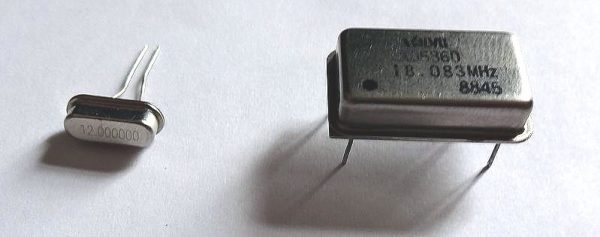
Here’s an example of a crystal physical form[sumber]

To be able to generate a clock signal, crystals still need to be connected with several components. Examples of crystal-based oscillators such as the following[sumber]
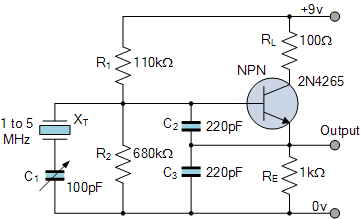
In most microcontrollers, it has been prepared with the clock circuit inside the microcontroller, so as to activate the crystal is quite connected to the microcontroller and added 2 pieces of capacitor. The capacitor values are generally adjusted to the type & crystal size used, and are already defined in the microcontroller datasheet. [sumber]
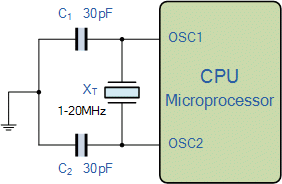
Crystal Oscillator with Temperature Compensation for Clock: TCXO, MCXO & OCXO
The usual crystal oscillator has weakness, which is the frequency value still changing against the temperature. To overcome this, it can be used crystals whose frequency is compensated for temperature changes. This component is referred to as Temperature Compensated Crystal (TCXO). At TCXO, compensation is made analogous to adding a certain series.
There is also digital compensation by adding microprocessors, with Microcontroller Compensation (MCXO) technology.
TCXO and MCXO are already available in the form of modules, making it easier to use.
The popular TCXO example is used as the real time clock is DS3231 from Maxim Integrated. DS3231 is sold in the form of modules that are already equipped with a Lithium battery so that the time stored in it is not lost if the power source is turned off.
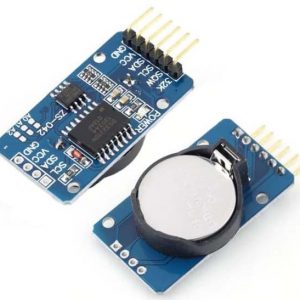
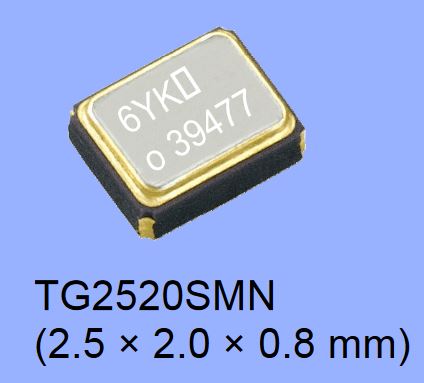
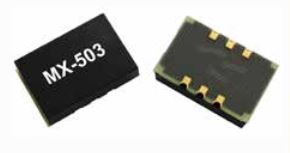
Temperature control Crystal oscillator (OCXO)
In this type of oscillator, as a source of frequency used crystals are maintained with a temperature control system. This system is also called as Crystal Oven or Oven Controlled Crystal Oscillator (OCXO)
OCXO dimensions are quite large, because in it there must be a series of heaters, temperature controllers and insulators so that the temperature is stable.
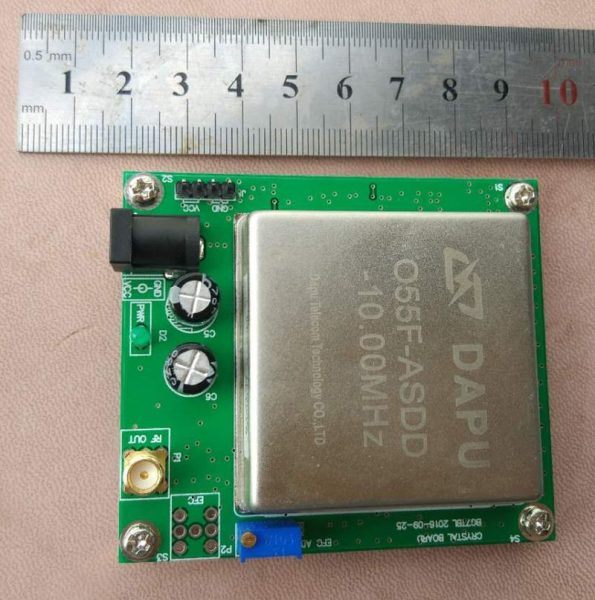
The precise comparison of crystal oscillators can be seen in the following table[source]
Crystal Oscillator Clock with GPS (Global Positioning System)
If the accuracy of the OCXO crystals is still lacking, the precision can still be improved using the help of GPS signals. This system is referred to as GPS Clock or GPS disciplined oscillator (GPSDO).
GPSDO system diagram block is as follows[sumber]
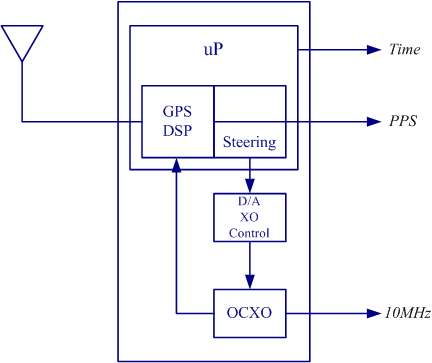
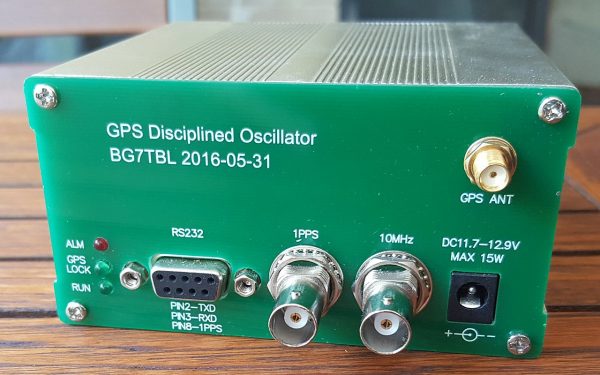
Clock Circuit Comparison
The clock circuits have various accuracy , drift, power and weight. We must weigh those factors when we choose suitable clock source for our electronic system.
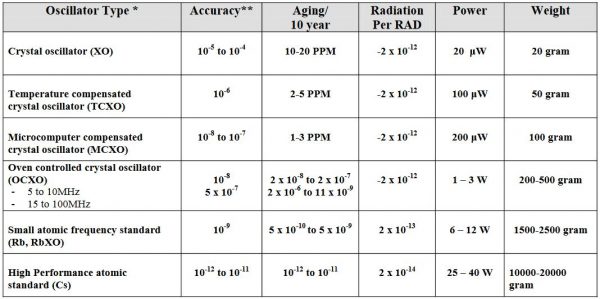
Here are the differences between common types of crystal oscillators:
-
XO (Crystal Oscillator): An XO, or crystal oscillator, is the simplest and most common type of oscillator. It uses a quartz crystal resonator to generate a precise frequency. XO’s typically have a frequency stability of +/- 50 ppm (parts per million).
-
MCXO (Microcomputer Compensated Crystal Oscillator): An MCXO is a type of oscillator that uses a microcomputer to compensate for changes in temperature and other environmental factors that can affect the oscillator’s frequency stability. MCXOs typically have a frequency stability of +/- 5 ppm.
-
TCXO (Temperature Compensated Crystal Oscillator): A TCXO is a type of oscillator that uses a temperature-compensating circuit to maintain a stable frequency over a range of temperatures. TCXOs typically have a frequency stability of +/- 1 ppm to 5 ppm.
-
OCXO (Oven Controlled Crystal Oscillator): An OCXO is a type of oscillator that uses a temperature-controlled oven to maintain a constant temperature around the crystal resonator, resulting in a high degree of frequency stability. OCXOs typically have a frequency stability of +/- 0.01 ppm to 0.1 ppm.
The main difference between these types of oscillators is their frequency stability, which is a measure of how well they can maintain a precise frequency over time and in varying environmental conditions. The stability of an oscillator is typically expressed in ppm (parts per million), with a lower ppm indicating a more stable oscillator. The cost of these oscillators also increases with their frequency stability, with XO being the cheapest and OCXO being the most expensive. The choice of oscillator will depend on the specific requirements and performance level needed for the application.
Reference
- Datasheet MX-503
- TG2016SMN_en
- DS3231 Maxim Integrated
- Datasheet MX-503
- TG2016SMN_en
- DS3231 Maxim Integrated
- TCXO, Temperature Compensated Creystal Oscillator
- High Stability Microcontroller Compensated Crystal Oscillator
- Wikipedia: Crystal Oven (OCXO)
- The Microcomputer Compensated Crystal Oscillator (MCXO)